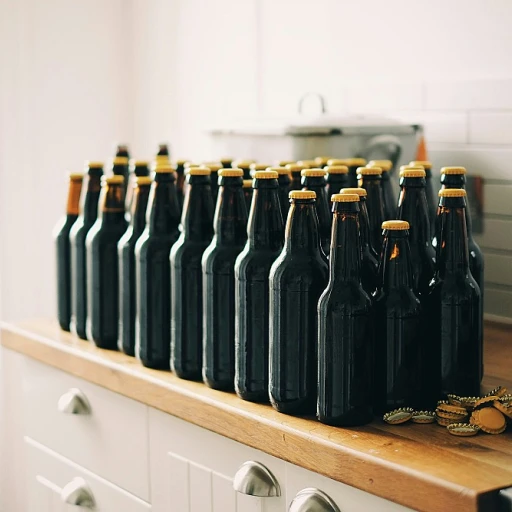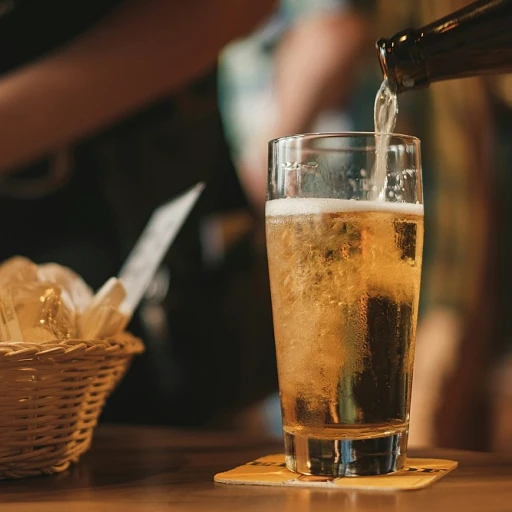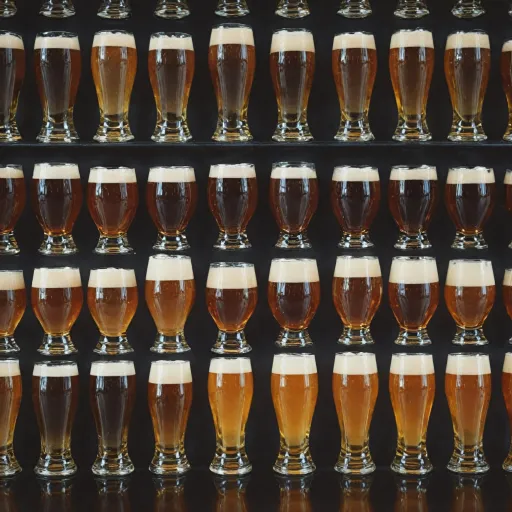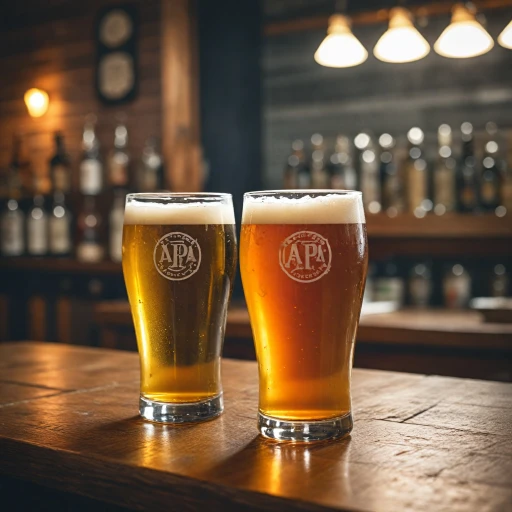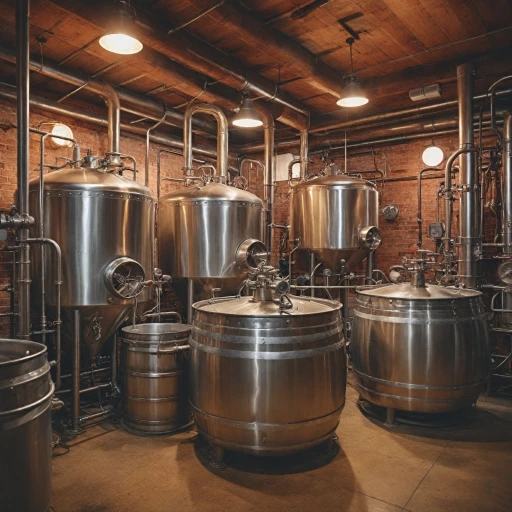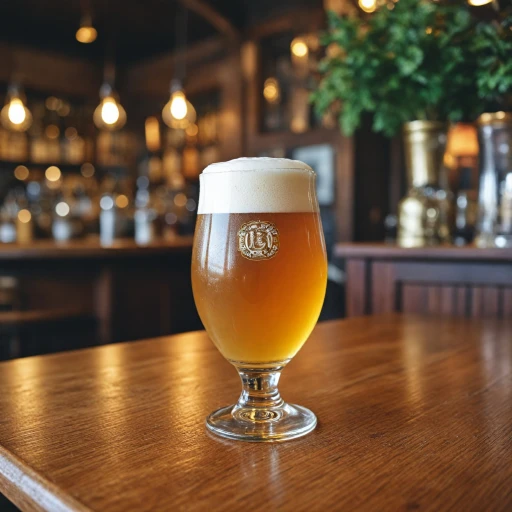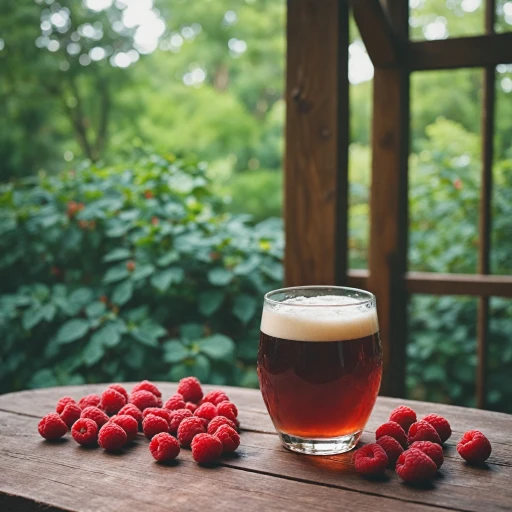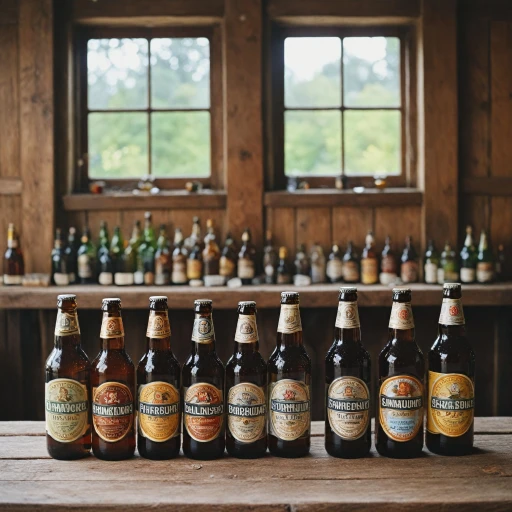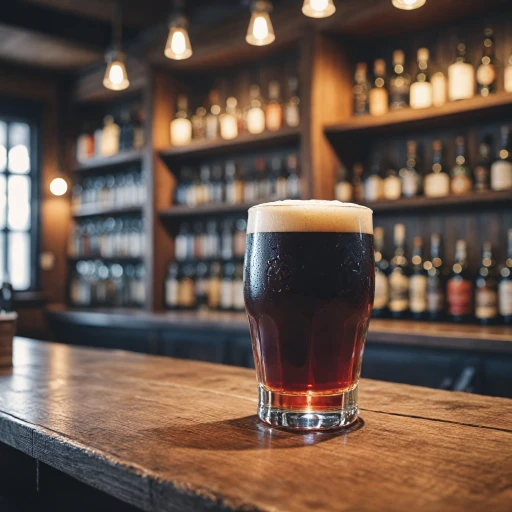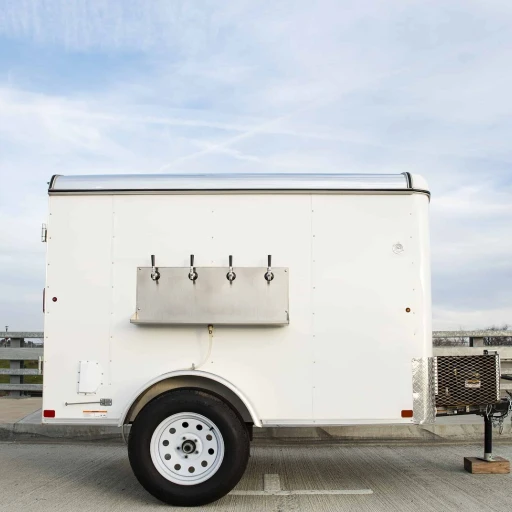
Beer Basics: A Quick Overview
The Essence of Beer
Beer, a beverage cherished worldwide, is crafted from four essential ingredients: water, malted barley, hops, and yeast. These components work in harmony to create a drink that's versatile and rich in flavor. With its origins dating back thousands of years, beer has evolved into numerous styles, each with its own unique taste and character. To understand beer fully, it's important to recognize the key players in its composition:- Water: Making up to 95% of beer, the type of water used can greatly affect the final product's flavor.
- Malted Barley: This is the source of fermentable sugars, and its variety and treatment influence the beer's color and taste.
- Hops: These little green cones give beer its bitterness, aroma, and can also serve as a natural preservative.
- Yeast: The magic ingredient that ferments the sugars into alcohol and imparts a range of flavors.
Lager: The Cool Cousin
A Cool History
When it comes to refreshing brews, lager takes the stage with its chillier background. Unlike its warm-fermented relatives, lager beer is a type of beer that involves cool fermentation. Lager got its start in Central Europe, traditionally brewed in cooler caves and cellars, leading to its name derived from the German word 'lagern', meaning 'to store'. Today, it’s a beloved choice across the globe.
Chill and Crisp Appeal
Lager’s method of production calls for cool temperatures and extended aging, producing a beer famous for its crisp, clean taste. This brewing process slows down yeast activity and allows for a different selection of flavors and aromas compared to its ale counterpart. Lager's prominent refreshing qualities include a mellow, smooth finish that makes it especially popular during the hotter months.
Different Kinds of Lager
Lager isn’t a one-flavor-fits-all kind of brew. It comes in various substyles, with pale lagers like Pilsner being light, delicate, and highly carbonated, while dark lagers, like Dunkel, offer richer malty tones. These differences provide a broad spectrum of flavors for lager lovers to explore.
Popular Choice at Home and Worldwide
Whether you're savoring a local craft lager or opting for popular commercial brands, lager’s balanced character is undeniable. Lager remains a staple in bars and at gatherings worldwide, embodying both simplicity and complexity according to your preference.
To explore more about how alcohol content affects popular light beers, check this insightful guide.
Ale vs. Lager: The Yeast Factor
Yeast and Fermentation Types
One of the defining characteristics that distinguishes ales from lagers is the type of yeast used during fermentation. Beer fermentation can be categorized broadly into two families based on yeast behavior—top-fermenting yeasts, which are typically used in ales, and bottom-fermenting yeasts, found in lagers.
Ale Yeast: Top-fermenting yeast strains such as Saccharomyces cerevisiae work best at warmer temperatures, usually between 60-75°F (15-24°C). These yeasts tend to rise to the top during fermentation, producing a faster fermentation period and often resulting in a beer with a fruitier, more pronounced flavor profile.
Lager Yeast: On the other hand, lagers are brewed using bottom-fermenting yeasts like Saccharomyces pastorianus. These yeasts operate at cooler temperatures, from 45-55°F (7-13°C), and settle at the bottom of the fermentation vessel. This cooler and slower fermentation process allows lagers to develop cleaner flavors, often described as crisp and refreshing.
Understanding the yeast factor in the fermentation process will help you appreciate the complex world of beer and its diverse flavor possibilities.
Taste and Flavor Profiles
A World of Tastes: Comparing Flavors and Aromas
When it comes to flavor profiles, beer offers a vast spectrum, allowing for personal preferences to shine through. Both ales and lagers have their unique characteristics that set them apart, impacting the drinking experience for beer enthusiasts everywhere. Ales typically have a rich, complex flavor that can range from the fruity and floral notes of a pale ale to the robust, malty sweetness of stouts and porters. The top-fermenting yeast used in ales is responsible for these varied tastes, often imparting additional layers from esters and phenols produced during fermentation. On the other hand, lagers are recognized for their cleaner, crisper taste, a result of the bottom-fermenting yeast and cooler fermentation processes. This method often yields a smoother, more refreshing profile with subtle maltiness and hop bitterness, making lagers like pilsners and bocks flow smoothly on the palate. While tastes and aromas can significantly overlap, understanding specific styles helps to appreciate the wide array of flavors available. Whether you're indulging in the fruity complexity of an ale or the refreshing simplicity of a lager, each offers a unique journey for the senses.Brewing Process: Time and Technique
Timing and Techniques Define the Drink
When it comes to brewing, the difference between beer and lager is largely defined by the time it takes and the specific techniques employed. Beer, as a broad category, includes both lagers and ales, but it's the brewing method that sets them apart.
Lagers are fermented and conditioned at lower temperatures, typically in the range of 7°C to 13°C (45°F to 55°F). This cool fermentation process requires a special type of yeast known as "bottom-fermenting" yeast. The result is a slower fermentation, taking several weeks to months. This patience in the brewing process contributes to the characteristic clean, crisp taste of a lager.
In contrast, ales are brewed using "top-fermenting" yeast at slightly higher temperatures, usually between 15°C to 24°C (59°F to 75°F). This allows for a faster fermentation process, often completed in just a few weeks. The warmer brewing conditions harness more robust yeast activity, leading to the complex, fruity flavors many associate with ales.
Moreover, the timing doesn't just affect the taste. The longer lagering period allows unwanted compounds to settle out, delivering a clearer, more refined finished product. This is why, despite both being types of beer, the time and temperature differences are essential in shaping our sensory experience of drinking a lager compared to an ale.






